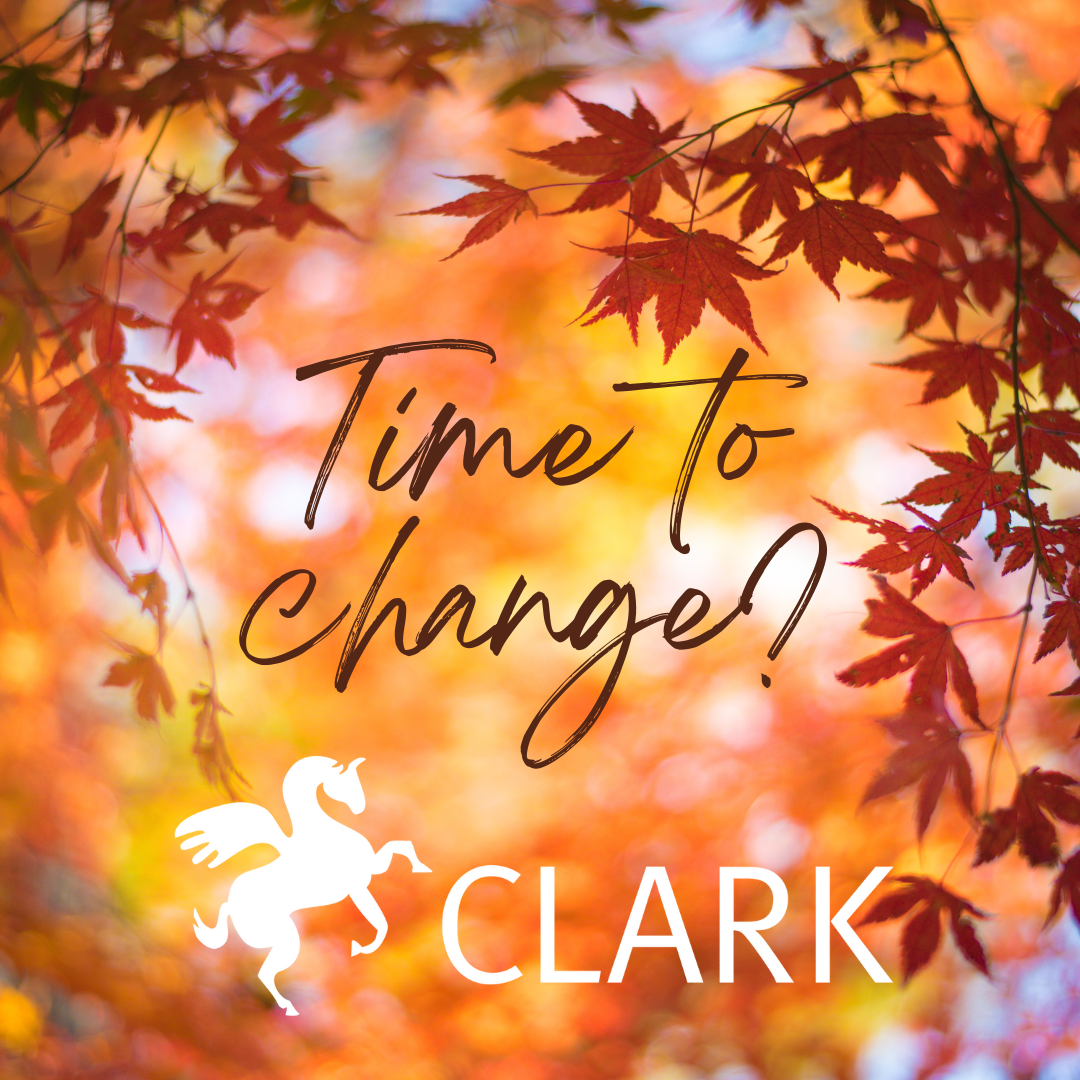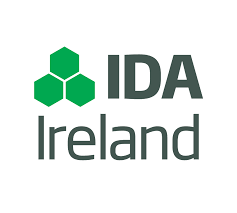YOUR CAREER IS MORE THAN A JOB- IT’S TIME TO CHANGE
The autumn leaves are beginning to fall, that “back to school” feeling is in the air. There’s an excitement about this time of year, new beginnings, fresh starts, career changes. The summer may be over but there’s something new starting just around the corner, you can feel it.
So do you need to change career but have no Idea what to do next?
Are you stuck in a job that isn’t you? Are you ready for a career change, but have no idea what else you could do – or where to start?
Finding a fulfilling career can be a long, incremental journey. Each stage in your career provides an opportunity to learn more about yourself: your talents, interests, challenges, and workplace values.
Finding a career coach or recruitment expert to partner with you is essential for career success. We will support you by providing a specialist service, expert information and tailored resources at every stage in your career journey. At Clark we complete specific, tailored competency based interviews to help you prepare. Using SHL assessments allows you to measure your skills with confidence. Clark provide you with a complimentary DISC behavioural profile from the world renowned lnnermetrix suite of psychometric profiling tools, helping you to understand your strengths and realise your full potential.
You can contact our team of experienced recruiters and career coaches on 045 881888 or email hello@clark.ie. You can also browse and apply for all of our active roles on www.clark.ie. We’d be delighted to hear from you.
MSD Ireland set to expand Carlow site
MSD Ireland is today announcing the creation of over 100 new jobs in Carlow as part of the company’s ongoing commitment to strengthening its manufacturing capabilities to meet increased global demand for MSD’s medicines and vaccines. The announcement comes as the company begins construction of a new facility at its existing site following a successful planning application process with Carlow County Council.
The new, state-of-the-art facility will be a first of its kind globally, focussing on the production of next generation oncology biologics. Currently employing almost 530 staff, MSD Carlow opened in 2008 as MSD’s first vaccines facility outside of the US. Construction on the site and hiring for open positions will commence immediately, with the intention of starting the new manufacturing operations in 2025.
The proposed facility will employ an additional 100 permanent staff in addition to the 700 roles created during construction. When operational, the new roles will include highly skilled jobs in quality, operations, engineering, supply chain and technical support.
Full details available at:
https://www.idaireland.com/latest-news/press-release/msd-ireland-set-to-expand-carlow-site
Abbott is to invest €440 million and create 1,000 new jobs
The project is supported by the Irish Government through IDA Ireland.
The new 250,000 sq. ft. state-of-the-art manufacturing facility, which will be located on the IDA Business and Technology Park in Loughboy, Kilkenny, subject to planning permission, will give Abbott the capacity to substantially increase production of its FreeStyle Libre technology for people with diabetes.
Speaking about announcement, Taoiseach Micheal Martin said: “This new investment by Abbott in Donegal and Kilkenny is hugely welcome news, bringing up to 1,000 highly-skilled jobs and expanded Medtech manufacturing capacity.
Abbott has a long and successful history, first establishing operations in Ireland in 1946, and this new investment is a great vote of confidence in the workforce here, and in this country as a place to invest. I wish all the team at Abbott every continued success in its endeavours in the years to come.”
Tanaiste and Minister for Enterprise, Trade and Employment Leo Varadkar said: “This is really fantastic news from Abbott. It’s a real vote of confidence in Kilkenny and Donegal and what those counties have to offer. We are working hard every day to create job opportunities in every county in the country, investing in every region to create a welcoming environment for the kind of opportunities we are seeing here today. It’s a major priority of mine as Minister for Enterprise, Trade and Employment. These 1,000 new jobs are a huge boost and really speak to the strength of Abbott’s 5,000 existing staff here. We never take this investment for granted. Thank you to the Abbott team.”
IDA Ireland Executive Director Mary Buckley said: “Abbott has had a longstanding presence in Ireland spanning over 75 years during which the company has made a substantial and valued contribution to regional economies. This significant and transformative investment in a new greenfield manufacturing facility in Kilkenny is fantastic news for the South East Region and for Ireland. It is also most welcome and demonstrates continued commitment to its Donegal site that it will benefit from further investment and new jobs as part of this investment and jobs announcement. IDA Ireland’s strategy to win investment for regional locations across Ireland includes encouraging and supporting established companies to develop additional regional sites and this is a prime example of that. This new manufacturing facility will deliver a substantial boost to the economy of the South East. I wish the company continued success.”
Reinvigorate Your Career by Taking the Right Kind of Risk
Successful careers don’t come without risk. In this piece, the author offers several suggestions for how leaders can think about taking smart risks — whether that’s exploring an underserved area of your industry and crafting a new role for yourself using your distinctive strengths to fill that niche, staying in your current role but inventing a new product or service, or changing industries entirely to look for new roles far afield from where you are now, where your skills might be more rare and valuable. Ultimately, it’s all about taking the long shots: identifying and pursuing opportunities that offer you new and better ways to leverage your skills.
Read the full article:
https://hbr.org/2018/04/reinvigorate-your-career-by-taking-the-right-kind-of-risk
5 Ways to Stand Out in Your Next Job Interview
Nailing a job interview takes more than preparation and practice. If you want to get hired, you need to tell a story about why you’re the perfect person for the role. Here are five pieces of advice to help you.
- Avoid talking about what you’re not.
- Tell a story about yourself.
- Allow yourself to be vulnerable.
- Don’t hide who you are.
- Pose thoughtful questions to the hiring manager.
Read the full article:
https://hbr.org/2022/07/5-ways-to-stand-out-in-your-next-job-interview
How to Design a Better Hiring Process
Many standard interview processes rely on outdated behavioural questions like “What are your greatest strengths and weaknesses?” to evaluate prospective hires. But more often than not, these types of questions fail to reveal useful information about a candidate’s competencies. A better approach is to immerse job candidates in unconventional scenarios to gather the most useful insights about their critical-thinking abilities, tech savviness, and interpersonal skills. For example, if you want to test their ability to prepare, let them know the questions you’ll ask beforehand. If you want to test their technical skills, give them a problem to solve in real-time. And if you want to see if they’ll be a good cultural fit, have them play an interactive game with your employees.
Read the full article:
https://hbr.org/2020/06/how-to-design-a-better-hiring-process
The Power of Talk: Who Gets Heard and Why
Communication isn’t as simple as saying what you mean. How you say what you mean is crucial, and differs from one person to the next, because using language is learned social behaviour: How we talk and listen are deeply influenced by cultural experience. Although we might think that our ways of saying what we mean are natural, we can run into trouble if we interpret and evaluate others as if they necessarily felt the same way we’d feel if we spoke the way they did.
Read the full article: https://hbr.org/1995/09/the-power-of-talk-who-gets-heard-and-why
How to Avoid a Job Switch You’ll Later Regret
No one wants to feel regret after taking a new job. And yet, it’s something that happens. Here are some steps you can take during the job search process to avoid that sinking feeling that you’ve made a career misstep.
- Structure your decision-making process. Identify what’s most beneficial for you and your career long before you get to a decision point. Outline your career goals and which criteria you’ll use to decide whether to accept a job.
- Ask exploratory questions. During your interview, ask about employee engagement, growth potential, expectations, and how long people historically stay in their roles.
- Beware of your cognitive biases. Confirmation bias is the tendency to favor information that confirms what we already believe, like noticing and buying into stories that align with our current views. Be careful you’re not overlooking any clear warning signs.
- Seek an insider’s perspective. Make it a priority to network with employees who work for the company you’re interested in joining, and get their view of what it’s really like on the inside.
Read the full article: “Switching Jobs? Here’s How to Make Sure You Won’t Regret It.”
The power of understanding the needs of others
Good leaders must uncover the basic human desires of their teams so together they can reach greater heights. Here’s how to do it.
Many leaders struggle with gaining insight into what their teams really want. They find it difficult because the power that comes from their rank and authority often creates a distance and mistrust that prevents people from opening up. This decreases the leader’s motivation to pay sufficient attention to them.
Yet it is essential for you to uncover what matters to people so that you can become a better leader. It’s a matter of responsibility and of power. As we define it, power is the ability to influence the behavior of others. But what determines this ability? The answer is surprisingly simple. What enables one person to influence another is control over access to resources that the other person values. Take this idea seriously, and you will realize that influencing others in any situation requires answering a not-so-simple question: what do people value?
To read the full article click:
https://iby.imd.org/magazine/the-power-of-understanding-the-needs-of-others/
Diverse Teams Feel Less Comfortable — and That’s Why They Perform Better
In numerous studies, diversity — both inherent (e.g., race, gender) and acquired (experience, cultural background) — is associated with business success. For example, a 2009 analysis of 506 companies found that firms with more racial or gender diversity had more sales revenue, more customers, and greater profits. A 2016 analysis of more than 20,000 firms in 91 countries found that companies with more female executives were more profitable. In a 2011 study management teams exhibiting a wider range of educational and work backgrounds produced more-innovative products. These are mere correlations, but laboratory experiments have also shown the direct effect of diversity on team performance. In a 2006 study of mock juries, for example, when black people were added to the jury, white jurors processed the case facts more carefully and deliberated more effectively.
Under increasing scrutiny, and mindful of the benefits of diversity on the bottom line, many companies are trying to recruit and retain a more diverse workforce. Success has so far been marginal. With so much at stake, why aren’t these companies making more headway? One reason could be that, despite the evidence about their results, homogenous teams just feel more effective. In addition, people believe that diverse teams breed greater conflict than they actually do. Bringing these biases to light may enable ways to combat them.
To read the full article click:
https://hbr.org/2016/09/diverse-teams-feel-less-comfortable-and-thats-why-they-perform-better















